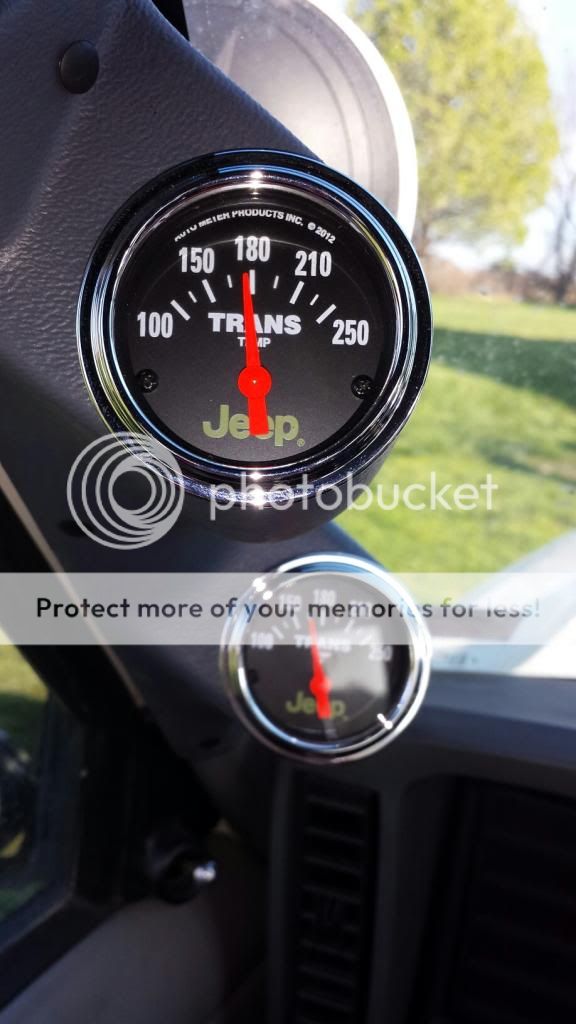when I started wheeling my XJ more than the running the occasional rutted road, I installed two temp gauges so I could see the intake and the outflow temperature. Probably overkill, but it also looks cool

When i first installed them them on the stock setup, it was normal for me to see 180+ degree's even on cooler days and 200+ when offroading even on moderate stuff.
After reading here that heat is the killer of AW4s, I wanted to avoid that possibility, so I installed a hayden trans cooler on the drivers side in front of the electric fan. I kept the stock routing, just adding the hayden inline.
Now I am regularly below the 150 mark and extremely rarely ever see the outflow side (line going from the trans to the cooler) higher than 180 and when I do see this, I usually see a 25 - 30 degree temp difference between the outflow and intake temp sensors.
Here is a picture of my gauge setup before the trans cooler addition.


